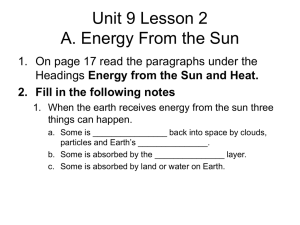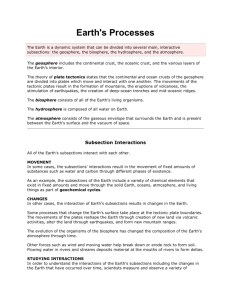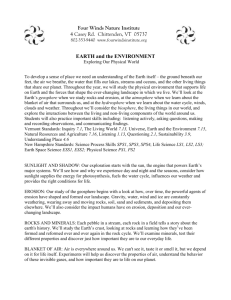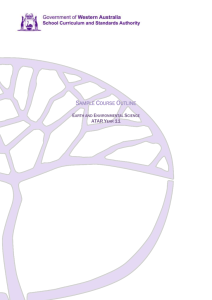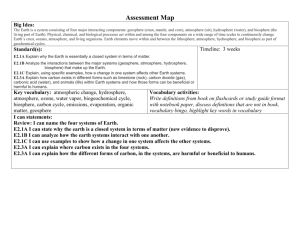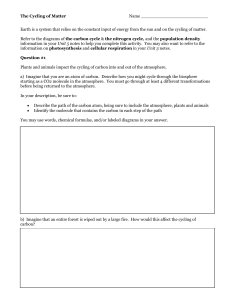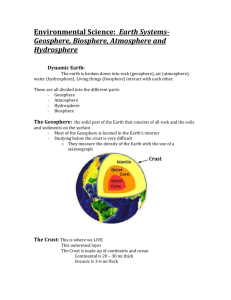rock and energy task
advertisement
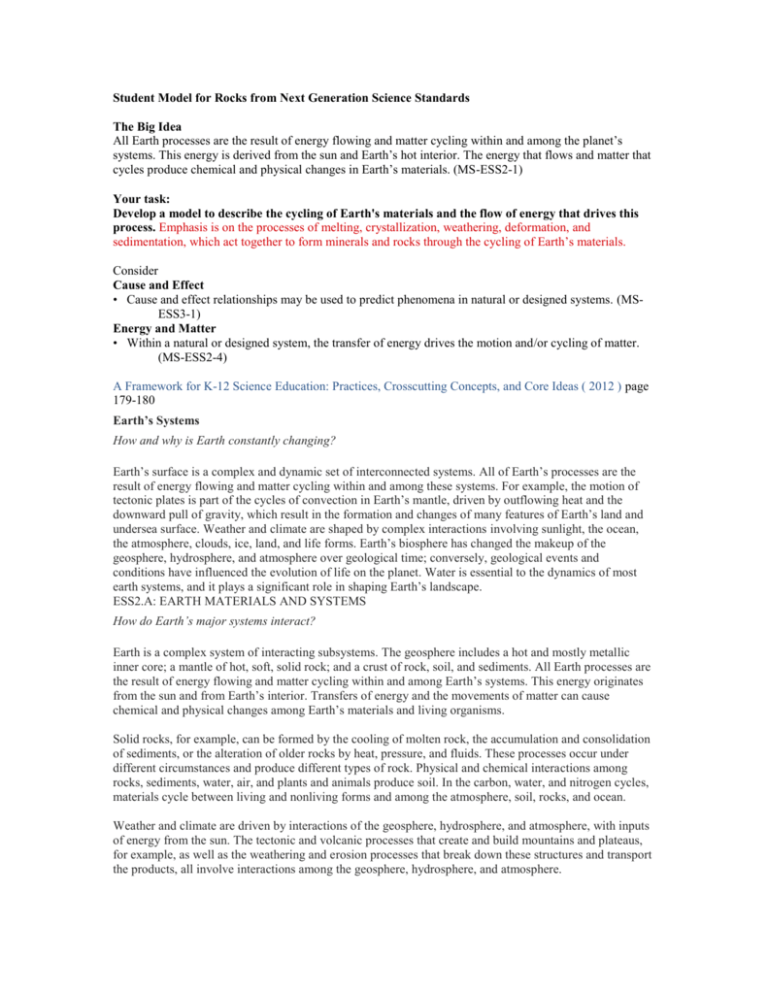
Student Model for Rocks from Next Generation Science Standards The Big Idea All Earth processes are the result of energy flowing and matter cycling within and among the planet’s systems. This energy is derived from the sun and Earth’s hot interior. The energy that flows and matter that cycles produce chemical and physical changes in Earth’s materials. (MS-ESS2-1) Your task: Develop a model to describe the cycling of Earth's materials and the flow of energy that drives this process. Emphasis is on the processes of melting, crystallization, weathering, deformation, and sedimentation, which act together to form minerals and rocks through the cycling of Earth’s materials. Consider Cause and Effect • Cause and effect relationships may be used to predict phenomena in natural or designed systems. (MSESS3-1) Energy and Matter • Within a natural or designed system, the transfer of energy drives the motion and/or cycling of matter. (MS-ESS2-4) A Framework for K-12 Science Education: Practices, Crosscutting Concepts, and Core Ideas ( 2012 ) page 179-180 Earth’s Systems How and why is Earth constantly changing? Earth’s surface is a complex and dynamic set of interconnected systems. All of Earth’s processes are the result of energy flowing and matter cycling within and among these systems. For example, the motion of tectonic plates is part of the cycles of convection in Earth’s mantle, driven by outflowing heat and the downward pull of gravity, which result in the formation and changes of many features of Earth’s land and undersea surface. Weather and climate are shaped by complex interactions involving sunlight, the ocean, the atmosphere, clouds, ice, land, and life forms. Earth’s biosphere has changed the makeup of the geosphere, hydrosphere, and atmosphere over geological time; conversely, geological events and conditions have influenced the evolution of life on the planet. Water is essential to the dynamics of most earth systems, and it plays a significant role in shaping Earth’s landscape. ESS2.A: EARTH MATERIALS AND SYSTEMS How do Earth’s major systems interact? Earth is a complex system of interacting subsystems. The geosphere includes a hot and mostly metallic inner core; a mantle of hot, soft, solid rock; and a crust of rock, soil, and sediments. All Earth processes are the result of energy flowing and matter cycling within and among Earth’s systems. This energy originates from the sun and from Earth’s interior. Transfers of energy and the movements of matter can cause chemical and physical changes among Earth’s materials and living organisms. Solid rocks, for example, can be formed by the cooling of molten rock, the accumulation and consolidation of sediments, or the alteration of older rocks by heat, pressure, and fluids. These processes occur under different circumstances and produce different types of rock. Physical and chemical interactions among rocks, sediments, water, air, and plants and animals produce soil. In the carbon, water, and nitrogen cycles, materials cycle between living and nonliving forms and among the atmosphere, soil, rocks, and ocean. Weather and climate are driven by interactions of the geosphere, hydrosphere, and atmosphere, with inputs of energy from the sun. The tectonic and volcanic processes that create and build mountains and plateaus, for example, as well as the weathering and erosion processes that break down these structures and transport the products, all involve interactions among the geosphere, hydrosphere, and atmosphere. Earth exchanges mass and energy with the rest of the solar system. It gains or loses energy through incoming solar radiation, thermal radiation to space, and gravitational forces exerted by the sun, moon, and planets. Earth gains mass from the impacts of meteoroids and comets and loses mass from the escape of gases into space. Earth’s systems are dynamic; they interact over a wide range of temporal and spatial scales and continually react to changing influences, including human activities. Components of Earth’s systems may appear stable, change slowly over long periods of time, or change abruptly, with significant consequences for living organisms. Changes in part of one system can cause further changes to that system or to other systems, often in surprising and complex ways.

